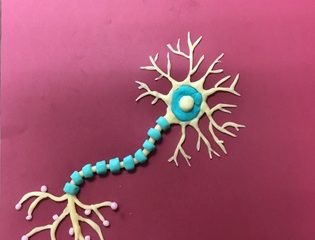Here is what I am reading today:
“”It is well-established that being inactive is perilous, and that regular physical activity improves health, quality of life and life expectancy”, says Professor Carl Johan Sundberg, Principal Investigator at the Department of Physiology and Pharmacology. “However, exactly how the positive effects of training are induced in the body has been unclear. This study indicates that epigenetics is an important part in skeletal muscle adaptation to endurance training.””
“….It also changes the release of multiple gut-related hormones, explains clinical endocrinologist Stephen O’Rahilly of the University of Cambridge in the United Kingdom, who wasn’t involved with the study. That’s important, because years of eating a diet high in fat and sugar can throw a person’s metabolism into disarray. Cells undergo genetic reprogramming that negatively impacts how they process sugar and store fat, locking in obesity. This pattern makes it harder and harder to lose weight, even if a person changes their diet and begins exercising.”
“UBC zoologists Benjamin Goller and Douglas Altshuler projected moving spiral and striped patterns in front of free-flying hummingbirds attempting to feed from a stationary feeder.
Even minimal background pattern motion caused the hummingbirds to lose positional stability and drift. Giving the birds time to get used to the stimuli didn’t eliminate the disruption. Projecting a combination of moving and stationary patterns in front of the birds didn’t help either, although birds were able to regain some stability.”
““We found significant associations between preeclampsia and ASD that increased with severity. We also observed a significant association between severe preeclampsia and developmental delay,” said Cheryl Walker, study senior author, assistant professor, Department of Obstetrics and Gynecology Division of Maternal Fetal Medicine and a researcher affiliated with the UC Davis MIND Institute.
While preeclampsia has previously been examined as a risk factor for autism, the literature has been inconsistent. The current study provides a robust population-based, case-controlled examination of the association between autism and preeclampsia and whether risk was associated with preeclampsia severity.”
“The findings are published in the December issue of Sleep, a joint publication of the Sleep Research Society and the American Academy of Sleep Medicine. The lead author is Carol Everson, Ph.D., professor of neurology, cell biology, neurobiology and anatomy at MCW. Co-authors are Christopher Henchen, B.S., Clinical Research Coordinator at MCW; Aniko Szabo Ph.D., associate professor of biostatistics and director of the Biostatistics Consulting Service at MCW; and Neil Hogg, Ph.D., professor of biophysics and assistant dean of recruitment for MCW’s Graduate School of Biomedical Sciences.”
“The effort led by Joshua Johansen from the RIKEN Brain Science Institute in Japan and New York University scientists Lorenzo Diaz-Mataix and Joseph LeDoux, tested an influential theory proposed in 1949 by the Canadian psychologist Donald Hebb that neurons that are connected and fire electrical impulses at the same time increase the strength of their connections to form a memory.”
“Zach Sims, co-founder and CEO of Codecademy, tells Mashable that learning how to code is reasonably easy for beginners, especially people under 18.
This year, Codecademy set up initiatives in England, Estonia and Argentina to bring coding education to young students — England and Estonia both added coding to their national curricula. As a result, Sims and the team found that “people in high schools can start with actual programming, and more advanced students in middle school can do the same,” he says.”




0 Comments